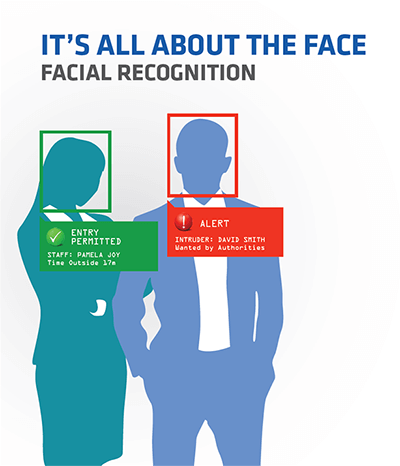
It's all about the face
Once written off by early adopters, facial recognition has come a long way to become a vital component in today’s technology-driven world. This white paper explores the farreaching effects of facial recognition, and how this technology revolutionises the security and commercial landscapes.
A face remains the most widely used way of identifying or authenticating a person. A photo of it is on most identification documents that we carry in our wallets. A lot of information can be provided from a person’s face, clothing, and appearance, and today a person’s face has become the epicenter of the most fascinating and promising evolving forensic technology – facial recognition.
In the field of biometrics, perhaps nothing stirs up as much debate as facial recognition. Using technology to identify or verify a person has always been something easily understood in theory. Heavy use of such technology in Hollywood blockbusters like Minority Report has certainly helped the technology gain widespread exposure among mainstream audiences. It also has to do with how naturally humans perceive one another in everyday life. We detect so many signs, say, of how a boss feels about a proposal or the type of day a spouse has had, by simply looking at the person’s face.
Ironically, when a machine does that analysis, several issues come quickly to mind. For the general populace, privacy continues to be an ongoing concern. For organisations rolling out the technology, issues of accuracy and reliability continue to be a challenge.
Indeed, until recently, facial recognition was far from a perfect science. While humans have always had the innate ability to recognise and distinguish between faces, computers only recently gained the same ability. The history of developing facial recognition software started in the mid-1960s, when scientists began working on using computers to recognize human faces. Since then, facial recognition software has progressed significantly. It is still improving rapidly today, but from the time it was first worked on in laboratories in the 1960s, the technology has advanced by leaps and bounds.
In 2006, a test of several facial recognition algorithms by the National Institute of Standards and Technology (NIST) showed that machine recognition has improved tenfold since 2002 and a hundredfold since 1995. The best algorithms actually performed more accurately than most humans can manage1.
That was in 2006. Since then, facial recognition has been one of the most progressive technologies in the world, thanks in part to new methods of measuring up a face.